who decides to visit naxos the largest island in the archipelago of Cyclades in Greece you should be prepared to find not only beautiful beaches, Mediterranean food and a pleasant climate.
This destination, which is becoming increasingly sought after by Brazilians, is a real box of surprises full of mythology, fun and unique landscapes.
Naxos is the kind of place that meets the needs of the whole family during their holidays, as it offers everything from children’s amusement parks to shops, restaurants, nightclubs and even archaeological sites. And lots of beaches, of course.
Portara and the Temple of the Gods
Portara, as its name suggests, is a large portal that stands at the main entrance to Naxos, north of the port, on the islet of Palatia.
In addition to being the main postcard of the island, the city welcomes visitors even before they have set foot in Naxos, as it is possible to see the construction from tens of meters away due to its size.
This magnificent work, which would have been 59 meters long by 28m wide and began to be built in 530 BC, was never completed, leaving only three pieces of marble weighing about 20 tons each and measuring 6m high by 3.5m. of lenght.
A current of historians claims that Portara was supposed to be the time of the god Apollo, while other scholars believe that the construction would be the temple of Dionysus, the god of wine and patron of Naxos.
Today the place has become beyond the gateway to the island, the perfect destination to enjoy the sunset. And best of all, the visit is free!
Cry, the capital
As soon as the tourist arrives at the port of Naxos, he is faced with the island’s capital, Chora. The city, which is full of cafes, restaurants, clubs and hotels, diverges a little from the typical landscape of the Greek islands.
Small modern three-story buildings were built in the middle of the white houses, typical of the Cyclades. The sign of modernity can also be seen inside the many bars that are located in the port area, the meeting point for young people at night.
The establishments are modern and comfortable and most of the time they have a DJ playing until the wee hours. For a minute you might think you are in Ibiza, Spain.
In the highest part of Chora is the burgo, that is, the medieval city, full of alleys and narrow passages, often full of tourists visiting the small shops selling clothes, handicrafts and souvenirs.
It is there at the top of the mountain that the castle of Kastro is located, one of the best preserved works built by the Venetians in the Cyclades.
The old castle had three entrance gates, but only two have been preserved: the southeast and main entrance called “Paraporti” and the north gate, “Trani Porta”.
In the old part of the island’s capital you can also find the Naxos Archaeological Museum where visitors will find important finds such as ceramics, objects from the Roman period, weapons made of bronze and even funerary urns made of gold.
On the roof of the building is a mosaic depicting a half-naked woman riding a sea monster.
Next to the museum there is also the orthodox church Panagia Theoskepasti, one of the oldest on the island, and the Monasteries of the Capuchins and the Ursulines, places that cannot be missed in the itinerary.
So far, the tours can – and should – be done on foot, but before starting to explore the rest of the island, the tourist will need to decide whether to rent a car to cover part of the 429 km² of extension of the site, a quadricycle – also known as ATV – or public transport will be used.
If the decision is the last option, it is worth remembering that the buses do not cover all parts of the island, especially the archaeological sites further away from Chora (€2 for the bus ticket, which must be purchased in advance at the markets or convenience stores ).
Another alternative would be to hire tours from tourist agencies spread across the island, which maximizes travel time. This makes the script more practical and comfortable.
In front of the port of Naxos, visitors will find dozens of agencies, which also serve as tourist information services. One suggestion is the Naxos Bus Transfer, which offers specialized guides and vehicles for collective or private tours.
Naxos, its villages and churches
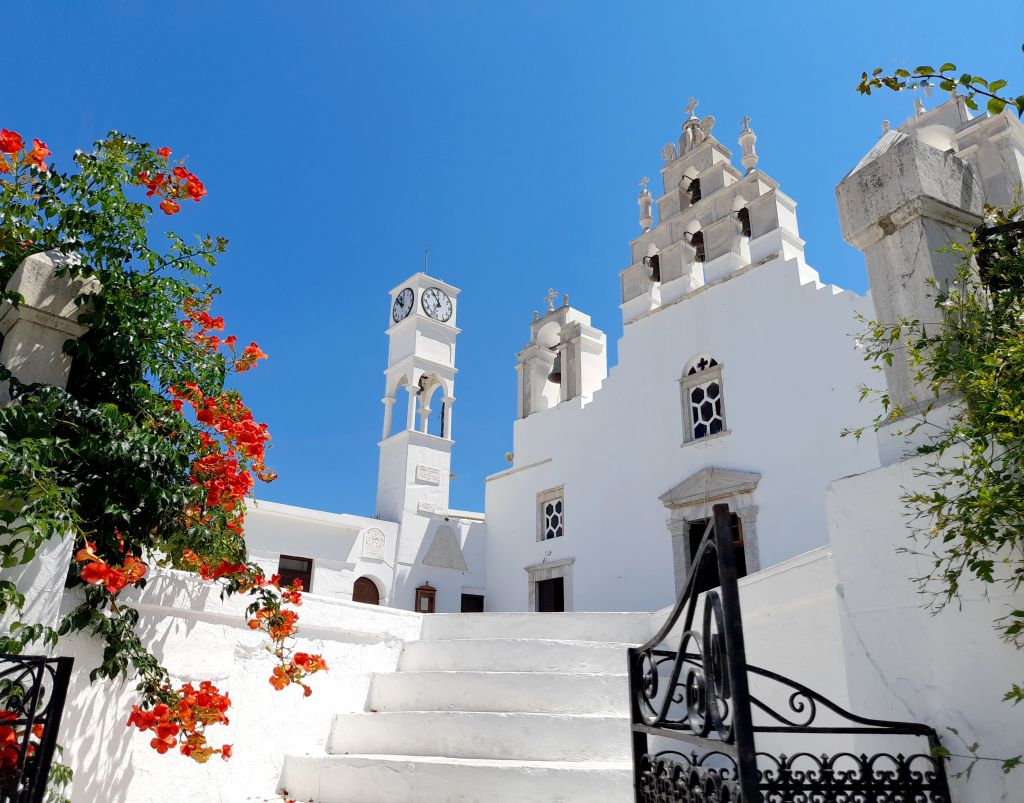
Filoti, one of the most famous villages in Naxos, is a true counterpoint to the hustle and bustle of Chora. In the central square, Gefyra, there are several cafes, restaurants and shops selling a variety of products, including local specialties, derived from lamb, goat and cheese.
In August, the largest religious festival in Naxos, the Assumption of the Virgin Mary, takes place at Panagia Filotitissa, the main church in the village. There are three days of celebration with typical foods, music and dances.
Another village that should be part of the itinerary is Apiranthos, located on the slopes of Monte Fanari at 600m above sea level. At the entrance to the village is the Zevgolis Tower, built in stone in the 17th century.
The place is relatively small, but it deserves a stop for a coffee while enjoying the marble-lined alleys, colorful flowers that decorate practically every house and the panoramic view of the region – Paros and Mykonos, two islands neighboring Naxos, can be seen. from there.
Not far from Apiranthos is the village of Halki (Chalki), right in the geographical center of the island. The ancient capital of Naxos was also the warehouse for goods produced in the region, mainly vegetables, which remain a large part of the local economy.
In Halki, you can see the old neoclassical mansions with large balconies and ornate roofs that prove the village’s prosperity in the past, the old Panagia Protothroni church, which has been operating uninterrupted since 1052, and the Vallindras distillery building, pioneer in the production of Kitron liqueur. , a unique drink from Naxos.
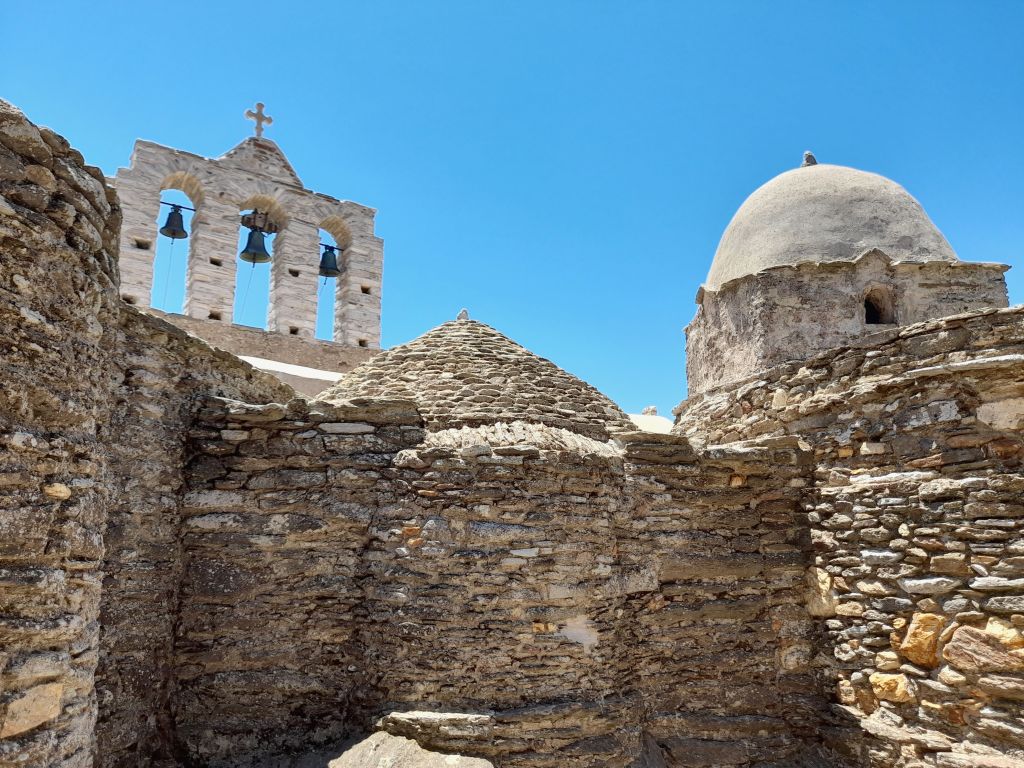
On the same route, there is also another tourist spot on the island, the church of Panagia Drossiani . Some of the frescoes preserved in the interior date from the 6th century and are considered to be the oldest in the Balkans, while the rest belong to the period between the 11th and 14th centuries.
For those who have more time in the itinerary, you can include a visit to Tripodes (Vivlos), a picturesque village with typical white Cycladic houses with the right to a photo with the windmills, and the village of Eggares, where the traditional Eggares Olive Oil Museum in operation since the late 19th century.
Entrance, as well as the guided tour, is free and at the end the visitor can taste the different types of olive oil that are sold on site.
Kouros de Naxos and the archaeological sites
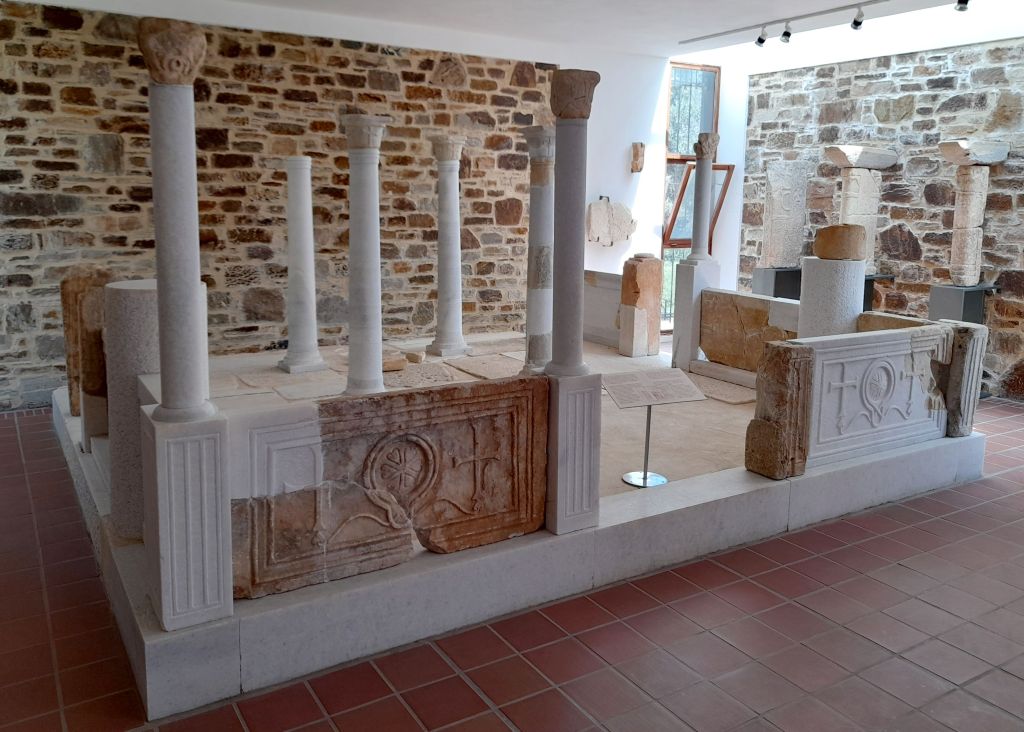
For history lovers, Naxos is literally an open-air museum.
An example of this is the Kouros, large unfinished statues of young, naked figures made of marble. They are located in the areas of Flerio (Melanes) and Apollonas, they date from the 6th century BC and were abandoned in the marble quarries, material abundant in the region.
In antiquity, it was common to carve works of this size directly on the deposits, but the statue would only be finished at the final destination.
It is believed that during transport the limbs of the statues broke – the leg of the Kouros in Apollonas and the feet of the figures in Melanes – and so they were abandoned.
The best-preserved statue of Apollonas is 10.7m long and weighs over 80 tons. Flerio’s two Kouros measure around 5m each. Visiting both sites is free.
Another must-visit for those who enjoy ancient history is the Temple and Sanctuary of Dimitra, near the village of Sagri. It is believed that this temple, built around 530 BC in a classical style, was erected in honor of the deities related to the fertility of the land as it is very close to areas suitable for agriculture.
On site there is also a museum where visitors can see some pieces taken from the excavations of the temple.
In Naxos, there are still the archaeological sites of Grotta, the aqueducts that connect Barou to Kaminia, the temple of Dionysus in Yria, among others.
Beaches for all styles
In Naxos, tourists will find beaches for all tastes, most of which are located in the western part of the island, which is also the most developed area.
For those traveling with children, the tip is to visit Praia de Saint George , next to the capital Chora. The sea is very calm and shallow, in addition to being close to taverns, bars, bathrooms, etc. In fact, for those who like comfort, this region is also suitable for accommodation.
Plaka, the longest beach in length and a favorite among hippies, along with Agios Prokopios and Agia Ana are considered the most famous in Naxos. They are well organized with restrooms, bars with sun loungers, parking lots, hotels etc.
In Agia Ana, the highlight is the Santana Beach Club, a meeting place for celebrities and the traditional restaurant “Gorgona”.
The beaches of Aliko and Agios Georgios are further away and are ideal for those who enjoy snorkeling. For the adventurous, the tip is Panormos, in the east of the island, as well as most of the wild beaches to the north.
For those who like privacy and peace, visit Orkos. Finally, for lovers of windsurfing and kitesurfing the perfect place is Mikri Vigla beach.
the regional flavors
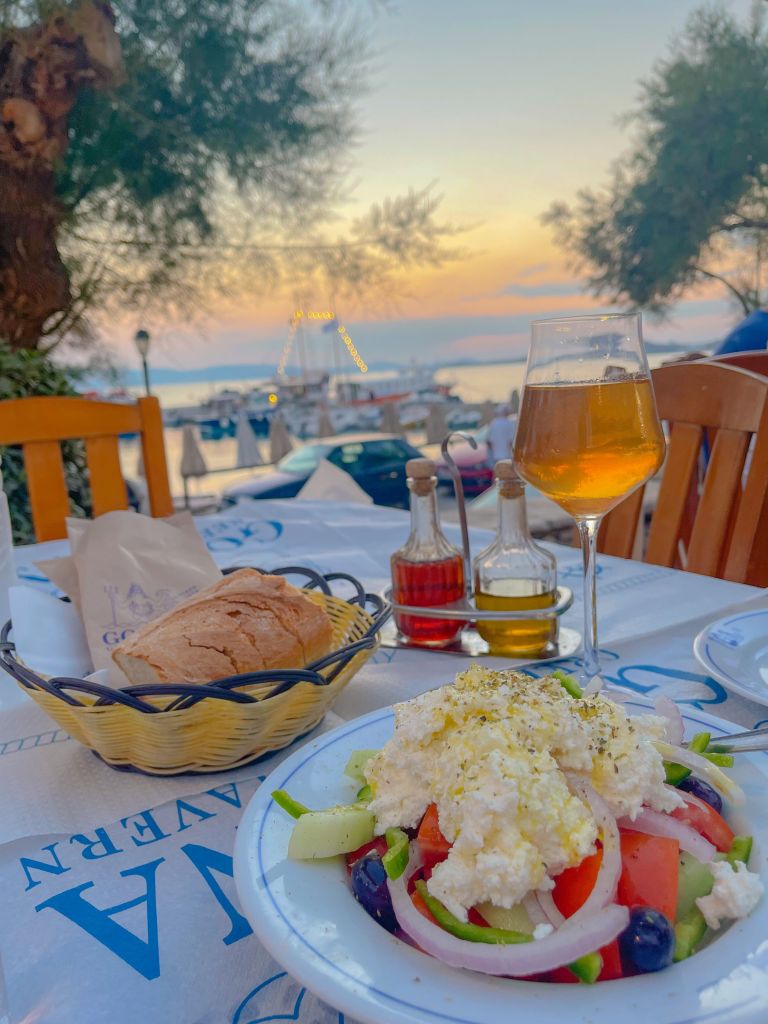
Potatoes grown in Naxos are undoubtedly the island’s highlight, all because of their sweet and particular flavor.
This tuber vegetable, when not the main dish, integrates the ingredients that make up the highlight meal. In fact, so famous, potatoes from Naxos end up being exported to the rest of Greece and Europe.
But it’s not just potatoes that traditional cuisine in Naxos is made up of. Each village has a typical recipe, but one of them stands out throughout the island, Kalógeros, a kind of roasted eggplant with stewed meat and cheese.
Very common in restaurants, Kalógeros is a light dish and goes well in both summer and winter. The tip here is “Meze – Meze”, in Chora, which serves not only the traditional recipe, but some other variations.
Naxos is also famous for its varied cheeses, often produced by hand. Gruyère de Naxos, perhaps the most famous on the island, is made with 80% cow’s milk and 20% sheep or goat milk. The end result is a yellowish cheese with an unmistakable flavor.
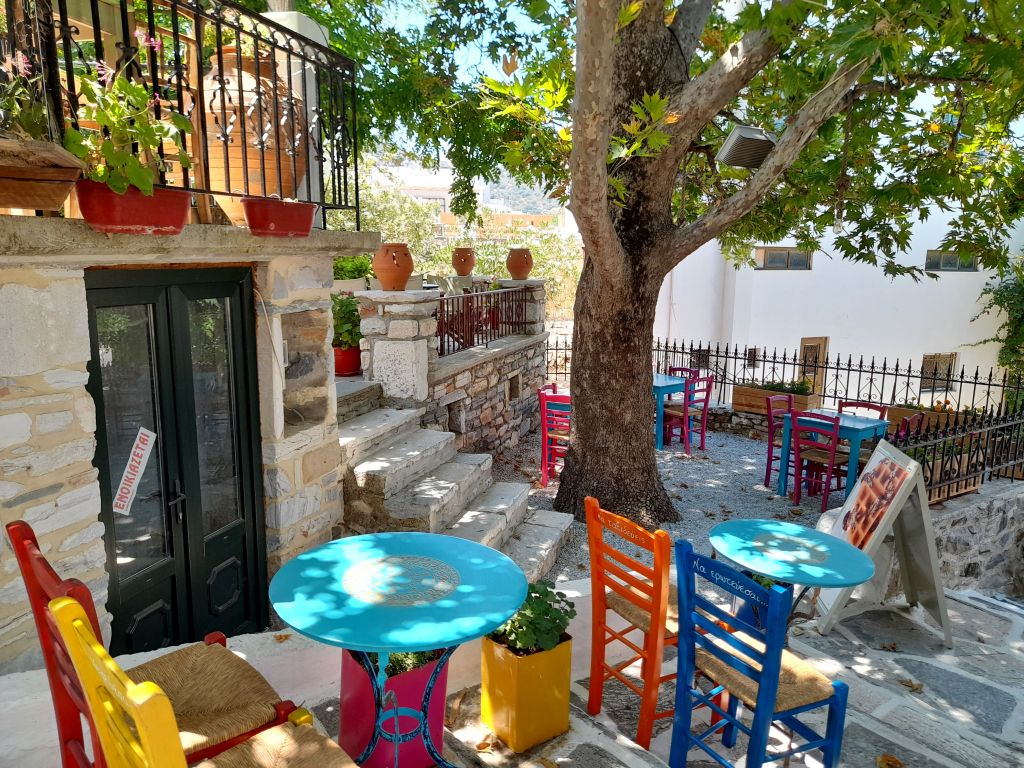
Arseniko is a hard cheese made from sheep’s milk with a little whey. Its color is also yellowish and the flavor is peppery.
Xinomyzithra, which is made with goat’s milk whey, is creamy and ready in just 24 hours, but as it is fresh, it should be consumed in a few days.
The cheese list also includes Kopanisti, creamy and peppery, Thylikotyri, ideal to enjoy with wine, and Komos, which is made with aromatic herbs and has little fat.
Finally, we cannot fail to mention the Kiton liqueur, the traditional drink of Naxos, which is made with cider and comes in three versions of alcohol content: green (softer), white (medium) and yellow (stronger).
How to get to Naxos
The tourist can use the international airports of Athens, Mykonos or Santorini and then head to Naxos by ferry. From Athens, ferries leave from the port of Piraeus.
Naxos also has a small airport that connects the island to the capital Athens, but it is good to check the availability of schedules and airlines that operate there.
For those who want to optimize their trip, it is also possible to visit the neighboring islands of Paros and Mykonos. There are boat tours departing from the port of Naxos every day, as well as ferries that run this route.
For more information access http://visitgreece.gr.
Source: CNN Brasil
Bruce Belcher is a seasoned author with over 5 years of experience in world news. He writes for online news websites and provides in-depth analysis on the world stock market. Bruce is known for his insightful perspectives and commitment to keeping the public informed.






